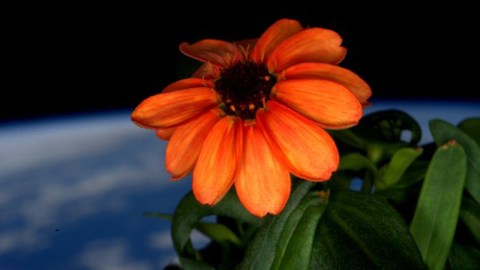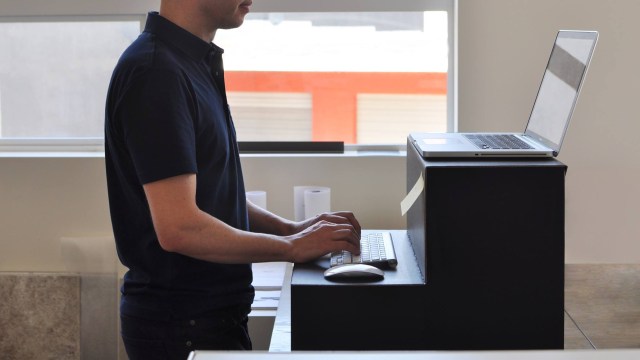Proof That Life Finds a Way. Even in the Most Adverse Conditions.

“Yes, there are other life forms in space!” astronaut Scott Kelly tweeted over the weekend. For the first time in our history, a flower has bloomed in space.
The zinnias have been in Kelly’s care for the past month. But for the past year, scientists up in the International Space Station (ISS) have tried to make this plant bloom with no success. Growing plants in microgravity isn’t easy, and past failures have helped pave the way to this recent success.
“The zinnia plant is very different from lettuce,” said Trent Smith, Veggie project manager. “It is more sensitive to environmental parameters and light characteristics. It has a longer growth duration between 60 and 80 days. Thus, it is a more difficult plant to grow, and allowing it to flower, along with the longer growth duration, makes it a good precursor to a tomato plant.”
In the early weeks of its growth, the high humidity and low airflow were causing mold to grow on the zinnias.
When Kelly stepped in to take charge of the project, he knew he’d have to channel his inner Mark Watney (from The Martian) and “science the sh*t out this.”
Our plants aren’t looking too good. Would be a problem on Mars. I’m going to have to channel my inner Mark Watney. pic.twitter.com/m30bwCKA3w
— Scott Kelly (@StationCDRKelly) December 27, 2015
Kelly took charge of the zinnias as the autonomous gardener onboard the ISS. He ditched the rulebook and treated the plants as he would his own garden back on Earth. A month after he took over, a zinnia bloomed in space:
How does your garden grow? Here's how my #spaceflower came to bloom: https://t.co/DbmTqqJopf #YearInSpace pic.twitter.com/kl1bxI96PJ
— Scott Kelly (@StationCDRKelly) January 16, 2016
These small plant-growing projects are meant to build upon a larger body of research that will help instruct future deep-space missions on how to grow various plants on trips to Mars and beyond. Without plant-life, there would be no hope for humanity to survive on another world.
“In future missions, the importance of plants will likely increase given the crews' limited connection to Earth,” said Alexandra Whitmire, deputy element scientist for the Behavioral Health and Performance (BHP) element in the NASA Human Research Program (HRP). “Studies from other isolated and confined environments, such as Antarctic stations, demonstrate the importance of plants in confinement, and how much more salient fresh food becomes psychologically, when there is little stimuli around.”
***
Natalie has been writing professionally for about 6 years. After graduating from Ithaca College with a degree in Feature Writing, she snagged a job at PCMag.com where she had the opportunity to review all the latest consumer gadgets. Since then she has become a writer for hire, freelancing for various websites. In her spare time, you may find her riding her motorcycle, reading YA novels, hiking, or playing video games. Follow her on Twitter: @nat_schumaker
Photo Credit: Scott Kelly/ Twitter





